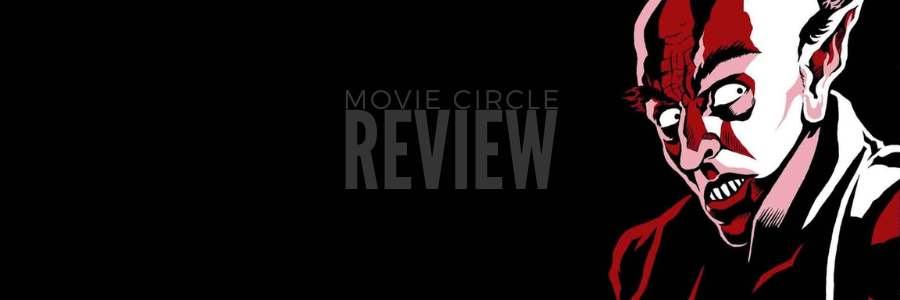The Golden Era of Fear: How Nosferatu Influenced 70s British Horror Movies
There have been many changes in horror movies over the years, but the 1970s were a turning point for British horror movies. During this time, horror movies moved away from the gothic monsters of earlier decades and toward a more psychological and atmosphere style. Nosferatu (1922), F.W. Murnau’s gem of silent horror that defined the look and feel of horror on screen, was a big influence on this change.
Nosferatu’s creepy images, use of shadows, and slow buildup of fear had a big impact on British horror movies made in the 1970s. You can see this in Hammer Horror Studios’ movies, the rise of folk horror, and the move toward a more psychological view of fear.
In this blog, we’ll explore how Nosferatu’s legacy shaped 70s British horror movies, from visual storytelling to psychological terror, and why these films remain influential today.
Nosferatu’s Influence on 70s British Horror Movies
Nosferatu was one of the first vampire movies, coming out in 1922. It was also different from anything else people had seen before. Unlike Dracula, who was wealthy and charming, Nosferatu’s Count Orlok was horrifyingly ugly and not human at all. His elongated fingers, hunched posture, and shadowy presence created a blueprint for horror villains that many 70s British horror movies would later adopt.
So how did Nosferatu shape the British horror movies of the 70s?
Gothic Shadows and Lighting: Many British horror movies from the 1970s were influenced by Nosferatu’s use of harsh lighting and shadows. Hammer Horror movies in particular used lighting with a lot of contrast to make creepy, disturbing environments.
Slow-Building Dread: Instead of using jump scares, Nosferatu scared people by making them wait for something bad to happen. This is a method used in movies like The Wicker Man (1973) and Don’t Look Now (1973).
✔ Monstrous Horror Figures: Unlike earlier, more romanticized vampires, Nosferatu introduced a more grotesque villain—something echoed in the terrifying creatures of 70s British horror movies like The Creeping Flesh (1973) and The Blood on Satan’s Claw (1971).
These elements became hallmarks of British horror cinema in the 1970s.
Gothic Horror & Hammer Films in the 70s
One of the biggest names in 70s British horror movies was Hammer Horror Studios. Founded in the 1930s, Hammer became famous for its gothic horror films in the 50s and 60s, particularly with Christopher Lee’s Dracula series. But in the 70s, they evolved their approach.
1. Dracula A.D. 1972 – Gothic Horror Meets Modern London
Traditional gothic horror was most affected by Nosferatu, but Hammer Horror also changed Dracula for the modern age because of him. Christopher Lee’s Dracula comes back to life in London in Dracula A.D. 1972, which mixes old-school gothic horror with modern 70s society.
2. The Creeping Flesh (1973) – A Nosferatu-Inspired Monster
In this movie, a scientist finds a skeleton that can grow new skin when it comes in contact with water. Nosferatu’s spooky photography has a lot to do with the grotesque transformations and shadow-driven horror scenes.
The Rise of Folk Horror in 70s British Cinema
While gothic horror continued to thrive, a new subgenre emerged in 70s British horror movies: folk horror. These films drew inspiration from pagan rituals, isolated communities, and ancient evils.
One thing that made Nosferatu unique was how it used scenery and being alone to make people scared. This same method was used in British folk horror to make rural areas just as scary as haunted houses.

1. The Wicker Man (1973) – A Folk Horror Classic
In this movie, a police officer looks into a pagan group on a remote Scottish island. The fear in The Wicker Man doesn’t come from monsters or ghosts, but from the creepiness of human rituals and beliefs. This idea was first explored in Nosferatu, which was about feeling alone and afraid.
2. The Blood on Satan’s Claw (1971) – Pagan Horrors in Rural England
Another example of 70s British horror movies inspired by Nosferatu, this film tells the story of a demon slowly possessing villagers in 17th-century England. The way the film uses shadowy figures and unsettling close-ups mirrors Nosferatu’s visual horror style.
Psychological Horror in 70s British Horror Movies
Another major shift in 70s British horror movies was the move towards psychological horror. Instead of relying solely on supernatural creatures, many British horror films began exploring human fear, paranoia, and trauma.
This psychological method was changed in several ways by Nosferatu’s silent, creeping horror:
✦ Minimalist horror: Just like Nosferatu used simple but effective camerawork, movies like 1973’s Don’t Look Now used spooky, quiet parts to build tension.
✦ Fear of the unknown: These movies don’t show the horror right away; instead, they let the fear build up slowly, like Nosferatu’s shadow over his victims.
1. Don’t Look Now (1973) – Horror Through Emotion
This movie is about a couple who is grieving and starts having dreams of their dead daughter while they are in Venice. It is one of the most troubling movies for the mind of the decade because of the hallucinatory editing, creepy atmosphere, and slow buildup of fear.
2. The Asphyx (1972) – A Scientific Horror Tale
The story of this movie is a scientist who tries to catch the essence of death. It is a mix of horror and science fiction. The film’s dark colors, spooky settings, and shadowy characters make me think of Nosferatu’s style.
Why 70s British Horror Movies Still Matter Today
Even decades later, the influence of 70s British horror movies can be seen in modern horror films.
Gothic and folk horror movies are still being made by people like Ari Aster (Hereditary, Midsommar) and Robert Eggers (The Witch, Nosferatu 2024).
Heavy shadows and strange movements are used in movies like The Lighthouse (2019), which looks like a Nosferatu film. Psychological horror movies still use the slow-build tension technique that was first developed in the 1970s.
Final Thoughts: The Everlasting Impact of Nosferatu on 70s British Horror Movies
Scary movies from the 1970s Without Nosferatu’s tradition of shadows, slow-burning fear, and grotesque bad guys, British movies wouldn’t be the same. Nosferatu is a big part of all of Hammer Horror’s movies, from the gothic Dracula movies to the folk horror of The Wicker Man to the psychological horror of Don’t Look Now.
The unsettling mood, unsettling visuals, and monstrous horror that were first seen in Nosferatu are still used in horror movies today. If you watch a great British horror movie from the 1970s again, pay close attention. You might see the shadow of Nosferatu moving in the IMDB background.
